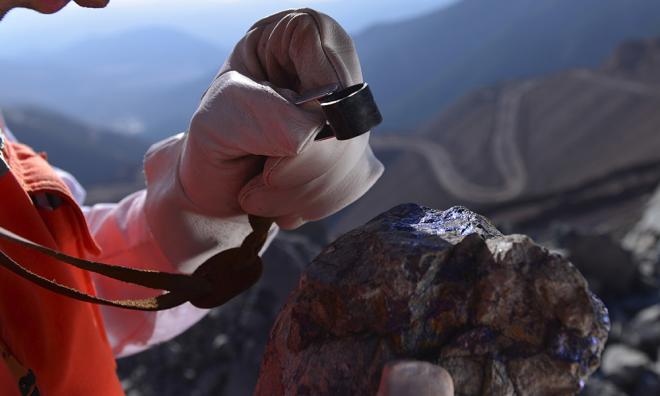
The Water, Land and Natural Resources Ministry and Perak government have been urged to make public and disclose the contents of the deal inked with a China company to explore rare earth minerals in the state.
Sahabat Alam Malaysia has stepped up its opposition to the deal by saying it wants to understand what the Chinese company is tasked to do, the costs, who will finance this venture, where the exploratory activities will take place and what activities are involved.
"Secondly, we call on the ministry to make public the government’s policy on the development of the rare earth industry, including the environmental and social safeguards, laws and regulations as well as the implementing and enforcement capabilities and mechanisms in place prior to embarking on this Perak venture or any further ventures anywhere in the country," said Sahabat Alam Malaysia president Meenakshi Raman in a statement.
"We also note that most environmental matters are within the purview of the Ministry of Energy, Science, Technology, Environment and Climate Change, and we wonder if that ministry has been consulted and its approval obtained for the MoU.
"Thirdly, we call on the Water, Land and Natural Resources Ministry and the Perak government not to proceed with implementing the MOU until these matters are adequately clarified," she added.
Yesterday, the Water, Land and Natural Resources Ministry issued a statement in response to SAM’s concerns over the memorandum signed between the Perak government and Chinalco GXNF Rare Earth Development to undertake the exploration of rare-earth minerals in Perak.
The ministry clarified that “the context of the signing of the MOU is to use China's expertise in identifying the potential of rare earth sources in Perak, especially in ion-adsorption clay that does not contain thorium or uranium as by-product wastes”.
The ministry added that it “supports any cooperation from foreign parties if it is positive for economic development and is sustainable and does not impact the environment and the well-being of the community.”
Meenakshi said despite these assurances by the ministry, Sahabat Alam's concerns have not been allayed as their preliminary research on China’s experience shows that there are very "serious environmental damage and human-health costs" related to the mining and leaching of ion- adsorption rare-earth clay resources.
She cited a 2013 study by six Chinese university academics on the consequences in Southern China of the ion-absorption rare earth industry reveals devastating environmental effects in the region.
The study, "China's ion-adsorption rare-earth resources, mining consequences and preservation" has many alarming findings, Meenakshi said.
"It said that China's central government in June 2011, enforced a ban on surface mining and tank/heap leaching while implementing in- situ leaching for ion-adsorption rare earth," she added.
According to the study, “surface/mountaintop mining for ion-adsorption rare earth ores has become the dominant driver of land-use change and degradation in southern China, causing permanent loss of ecosystem, severe soil erosion, air pollution, biodiversity loss and human health problem”.
The study estimates that "the costs of this mining are more than the benefits, even before taking into account the human health and environmental costs.''
The study further states that while "the in-situ leaching technology is advantageous in terms of surface vegetation clearing and soil excavation, however, “the enforcement of in-situ leaching to tackle environmental problems associated with rare earth mining and extraction remains highly contentious.
“The practice of in-situ leaching has also revealed serious environmental problems including underground water contamination, mine collapses and landslides.
"More than100 landslides reported in the Ganzhou region were attributed to in-situ mining and leaching practices, at significant human costs and losses," the study reported.
Meenakshi said the reclamation of finished in-situ leaching mines could be more costly than that of surface mining/heap leaching mines.
"These findings on both categories of activity (surface/mountaintop mining, and in-situ leaching) are indeed alarming and the ministry’s assurances do not give us any comfort.
"This central question remains, why embark on exploration to identify rare earth minerals in the first place if the mining and processing of the minerals are so extremely environmentally damaging, with serious human and public health costs?" she added. - Mkini
No comments:
Post a Comment
Note: Only a member of this blog may post a comment.